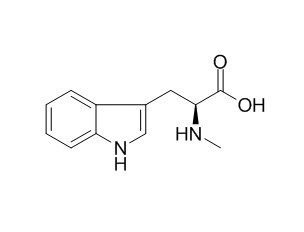Abrine
Abrine shows comparable ABTS radical cation scavenging activities and reduces power to two commercial antioxidants (BHT and Trolox).
Inquire / Order:
manager@chemfaces.com
Technical Inquiries:
service@chemfaces.com
Tel:
+86-27-84237783
Fax:
+86-27-84254680
Address:
1 Building, No. 83, CheCheng Rd., Wuhan Economic and Technological Development Zone, Wuhan, Hubei 430056, PRC
Providing storage is as stated on the product vial and the vial is kept tightly sealed, the product can be stored for up to
24 months(2-8C).
Wherever possible, you should prepare and use solutions on the same day. However, if you need to make up stock solutions in advance, we recommend that you store the solution as aliquots in tightly sealed vials at -20C. Generally, these will be useable for up to two weeks. Before use, and prior to opening the vial we recommend that you allow your product to equilibrate to room temperature for at least 1 hour.
Need more advice on solubility, usage and handling? Please email to: service@chemfaces.com
The packaging of the product may have turned upside down during transportation, resulting in the natural compounds adhering to the neck or cap of the vial. take the vial out of its packaging and gently shake to let the compounds fall to the bottom of the vial. for liquid products, centrifuge at 200-500 RPM to gather the liquid at the bottom of the vial. try to avoid loss or contamination during handling.
ACS Omega2020, 5,33,20825-20830
Int J Pharmacol2020, 16:1-9
Appl. Sci.2021, 11(1),14.
Pharmacognosy Journal.2022, 14,4,327-337.
ACS Synth Biol.2020, 9(9):2282-2290.
Chem Biol Interact.2024, 398:111103.
Nutrients.2021, 13(8):2901.
Pharmaceuticals (Basel).2024, 17(8):1001.
Int J Biol Sci.2023, 19(10):3077-3098.
Int Immunopharmacol.2023, 7:127:111322.
Related and Featured Products
Food Funct. 2014 Sep;5(9):2268-77.
In vitro antioxidant activities and anti-proliferative properties of the functional herb Abrus cantoniensis and its main alkaloid abrine.[Pubmed:
25059572 ]
Abrus cantoniensis is a common and popular vegetative food consumed as beverage, soup and folk medicine in the tropical and subtropical areas of Asia. It has been claimed valuable for cleansing toxicants in the liver. However, the functional effects of A. cantoniensis have not yet been scientifically explored. This study comprehensively evaluated the in vitro antioxidant and anti-proliferative capacities of the herbal extract and the main alkaloid Abrine.
METHODS AND RESULTS:
Abrine was qualitatively and quantitatively determined in methanol extract (ME) using HPLC-DAD and LC-MS/MS. The results showed that ME, ethyl acetate fraction (EF) and Abrine exhibited comparable ABTS radical cation scavenging activities and reducing power to two commercial antioxidants (BHT and Trolox). The EF exerted strong cellular antioxidant activity and selective cytotoxicity against three cancer cell lines in a dose-dependent manner. Biological assays revealed that the EF induced cell cycle arrest at G2/M and apoptosis in MCF-7 and Hep3B cells after 48 h of treatment.
CONCLUSIONS:
Thus, A. cantoniensis exerted potent cellular antioxidant and anti-proliferative properties, highlighting why it has been traditionally used as a functional food.
Secologanic acid
Catalog No: CFN95028
CAS No: 60077-46-5
Price: $318/20mg
Tuberosin
Catalog No: CFN95107
CAS No: 41347-45-9
Price: $218/5mg
Rhamnocitrin 3-glucoside
Catalog No: CFN95134
CAS No: 41545-37-3
Price: $318/10mg
3,7,23,24-tetrahydroxycucurbita-5,25-dien-19-al
Catalog No: CFN95168
CAS No: 1446447-97-7
Price: $318/5mg
1,7-Diphenyl-5-hydroxy-4,6-hepten-3-one
Catalog No: CFN95171
CAS No: 87095-77-0
Price: $318/10mg
Isospinosin
Catalog No: CFN95350
CAS No: 89701-83-7
Price: $318/5mg
New compound 13
Catalog No: CFN95374
CAS No: N/A
Price: $318/5mg
5-Demethylsinensetin
Catalog No: CFN95415
CAS No: 21763-80-4
Price: $318/10mg
12beta-Acetoxy-3,7,11,15,23-pentaoxo-lanost-8,20-dien-26-oic acid
Catalog No: CFN95505
CAS No: 1309931-91-6
Price: $318/5mg
Resinacein D
Catalog No: CFN95591
CAS No: 2231061-47-3
Price: $413/5mg



